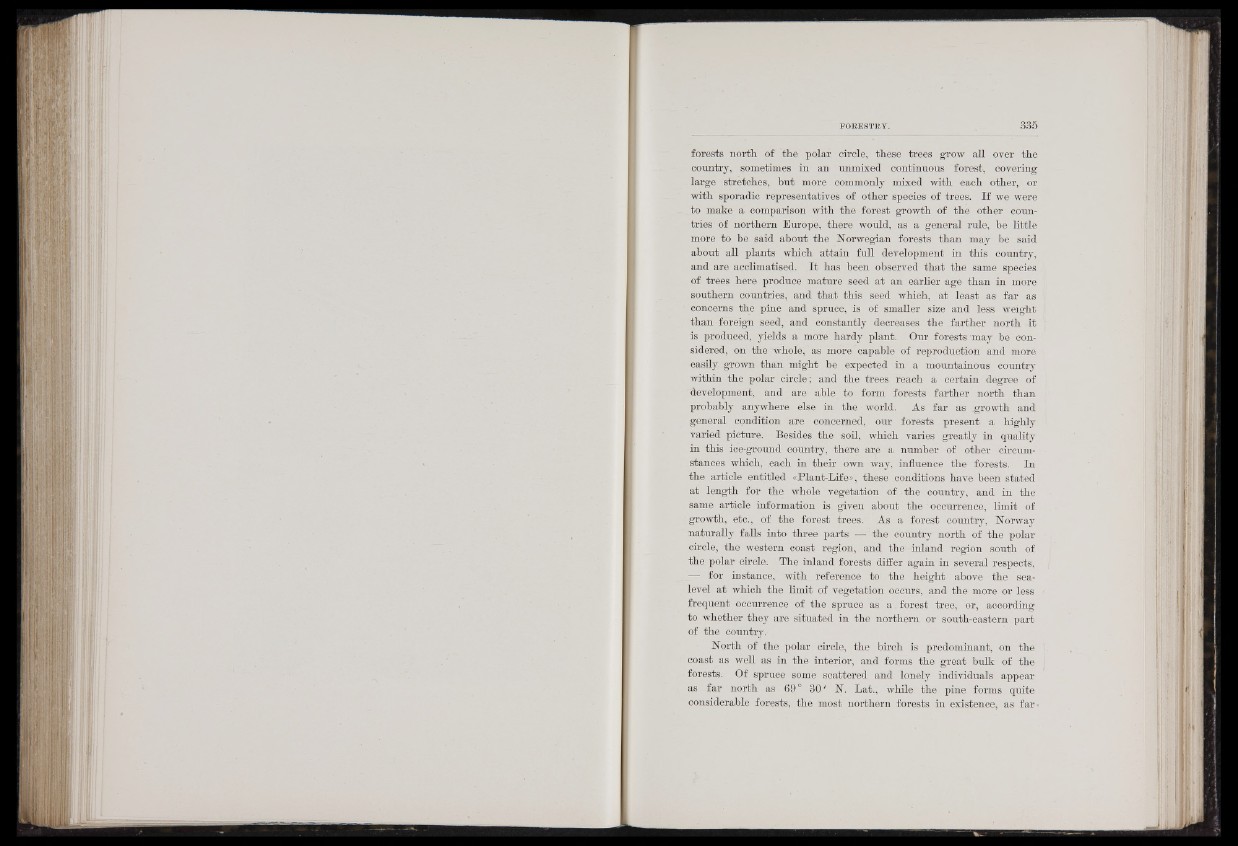
forests north of the polar circle, these trees grow all over the
country, sometimes in an unmixed continuous forest, covering
large stretches, hut more commonly mixed with each other, or
with sporadic representatives of other species of trees. If we were
to make a comparison with the forest growth of the other countries
of northern Europe, there would, as a general rule, be little
more to be said about the Norwegian forests than may be said
about all plants which attain full development in this country,
and are acclimatised. It has been observed that the same species
of trees here produce mature seed at an earlier age than in more
southern countries, and that this seed which, at least as far as
concerns the pine and spruce, is of smaller size and less weight
than foreign seed, and constantly decreases the farther north it
is produced, yields a more hardy plant. Our forests may be considered,
on the whole, as more capable of reproduction and more
easily-grown than might be expected in a mounijainous country
within the polar circle; and the trees reach a certain degree of
development, and are able to form forests farther north than
probably anywhere else in the world. As far as .growth and
general condition are concerned, our forests present a highly
varied picture. Besides the soil, which varies greatly in quality
in this ice-ground country, there are a number of other circumstances
which, .each in their own way, influence the forests. In
the article entitled «Plant-Life», these conditions have been stated
at length for the whole vegetation of the country, and in the
same article information is. given about the occurrence, limit of
growth, etc., of the forest trees. As a forest country, Norway
naturally falls into three parts -A the country north of the polar
circle, the western coast region, and the inland region south of
the polar circle. The inland forests differ again in several respects,
- for instance, with reference to the height above the sea-
level at which the limit of vegetation occurs, and the more or less
frequent occurrence of the spruce as a . forest tree, or, according
to whether they are situated in the northern or south-eastern part
of the country.
North of the polar circle, the birch is predominant, on the
coast as well as in the interior, and forms the great bulk of the
forests. Of spruce some scattered and lonely individuals appear
as far north as 69° 30' N. Lat., while the pine forms quite
considerable forests, the most northern forests in existence, as far